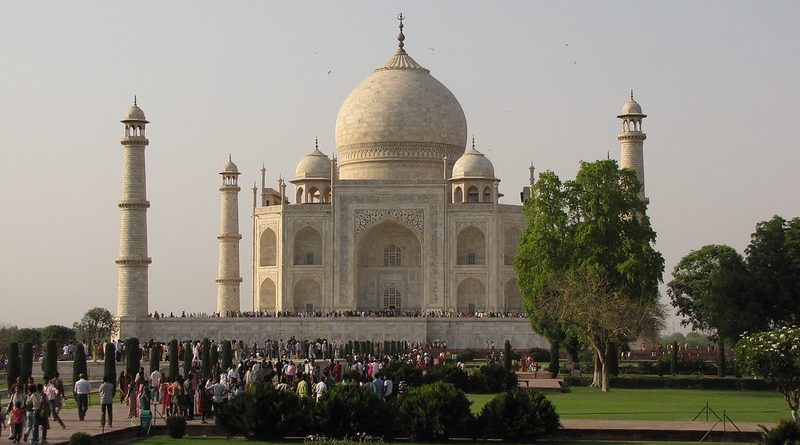The Taj Mahal: Monumental Love
History Facts
Where: Agra near Delhi, India
When: 17th century
Built by: Emperor Shah Jahan, dedicated to the memory of his beloved former wife
History: A monument to eternal love, loosing limbs and sickening things
Go there for: Outstanding beauty and changes of light and colour at different hours
Throughout the centuries, the Taj Mahal has become renowned as the most astoundingly beautiful monument to love ever built. Located in Agra, the capitol of the Mughal Empire during the 16th and 17th centuries, this mausoleum is the sole reason that many people visit India.
What’s the History There?
The Taj Mahal was built by Emperor Shah Jahan in memory of his wife Mumtaz Mahal, who died in 1631 giving birth to his 15th child. It is said that the Emperor was so distraught at her death that his hair turned white overnight.
Construction of the Taj Mahal began the same year, but it took a total of 22 years and 20,000 people to complete the building. The principal architect is believed to have been an Iranian man called Isa Khan. Many of the walls are adorned with complex patterns of semi-precious stones, excerpts from the Quran, and designs with decidedly European influence. Mumtaz Mahal and Shah Jahan’s tombs are located in the basement of the building.
When Shah Jahan was informed that the Taj Mahal was finally complete, legend has it that he was so keen to inspect the masterpiece that he did not want to wait any longer for the scaffolding surrounding it to be dissembled. He decreed that any citizen who helped remove the scaffolding would be permitted to keep the pieces for themselves, and in the event the task took just one day.
So delighted was Shah Jahan with the result, that he ordered that the hands or thumbs of many of the builders be amputated, so that they’d never be able to build a monument more perfect than his wife’s mausoleum.
What’s there to See and Do
Although it is possible to visit the Taj Mahal in a daytrip from Delhi, it’s worth spending a little time here as the appearance of the monument (and also the entry fee) changes with the light at different times of the day.
As well as exploring the ornamental gardens and long watercourses in which you can see a reflection of the Taj Mahal, you can also venture inside the mausoleum to where the tombs of the Emperor and his wife are located. There is a small museum near the Taj Mahal which houses original architectural drawings and information about the lengthy construction process.
More Information
Official India
Website of the Government of India Tourist Office, with information about every region of this vast, beautiful country.
The Taj
Informative site containing historical, architectural and tourist information about the Taj Mahal.
Main image: Taj Mahal in Agra, courtesy of Sandeep Achatan, c/o Creative Commons Licensing Attribution-NonCommerical-NoDerivs 2.0 Generic




